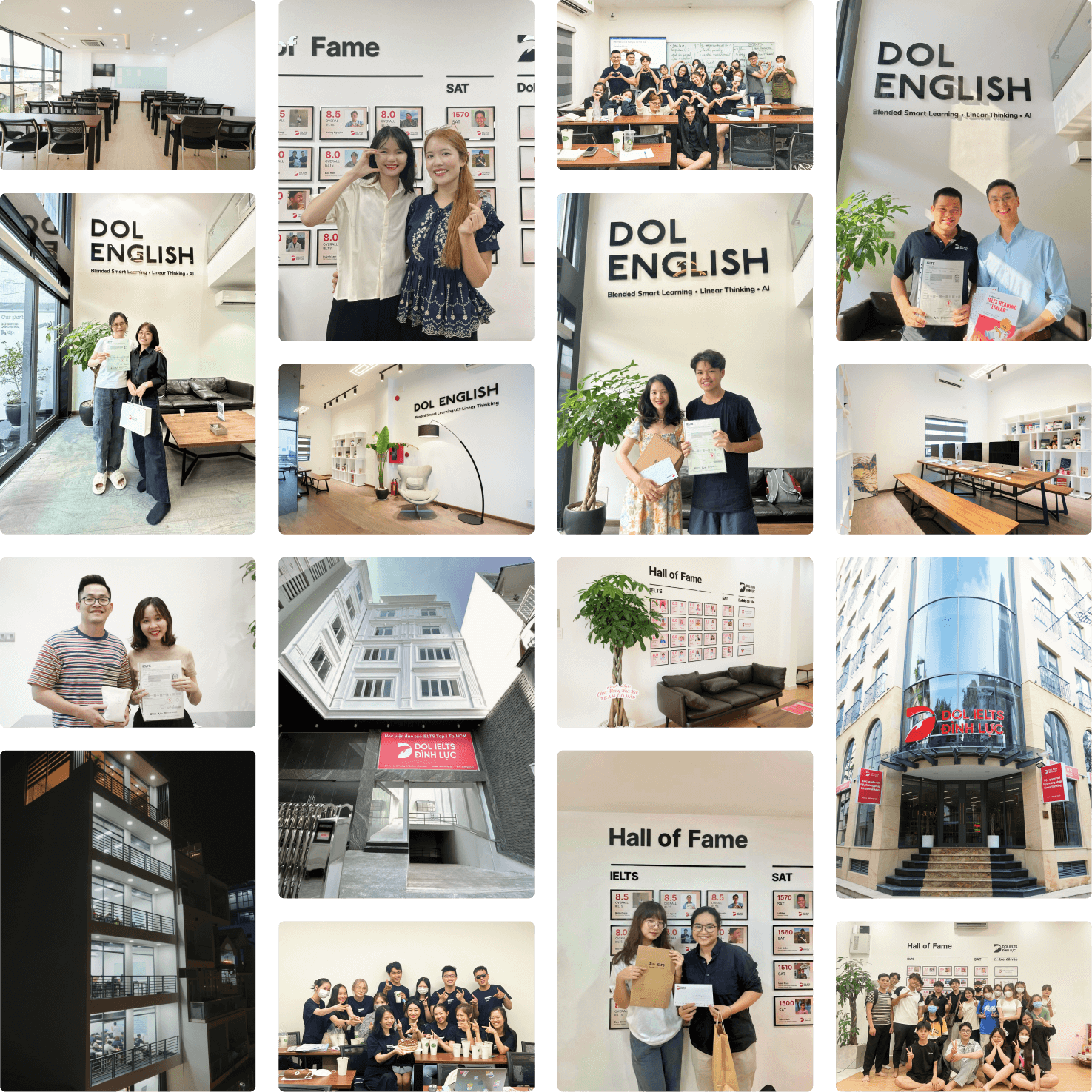Forecast IELTS Writing Task 2 - Topic Food & drinks (Food self-sufficiency) & sample band 8.5
[Quý 1/2025] Dự đoán đề IELTS Writing Task 2 – Dạng Agree & disagree chủ đề Food & drinks (Food self-sufficiency) kèm bài mẫu band 8.5+, dàn ý chi tiết, từ vựng và bài tập ôn luyện.
🚀 Đề bài
😵 Dàn ý
DOL sẽ trình bày quan điểm qua 1 đoạn mở bài (introduction), 2 đoạn thân bài (body paragraph), và 1 đoạn kết bài (conclusion).
Mở bài: Sau khi paraphrase lại đề bài, DOL sẽ đưa ra một Thesis Statement (luận điểm) để nêu quan điểm.
Body 1: DOL phân tích lợi ích của tự cung tự cấp lương thực và hạn chế nhập khẩu.
Body 2: DOL cho rằng tự cung toàn diện không thực tế và không phải lúc nào cũng hiệu quả.
- Explanation: Reduced dependence on unstable global markets.
- Explanation: Local agriculture → create jobs in farming sectors.
- Explanation: Less transportation → lower emissions and fresher produce.
- Example: Sustainable farming → reduced carbon footprint & improved resilience.
- Explanation: Limited climate & resources → low yields & environmental harm.
- Explanation: Comparative advantage → importing cheaper food + focusing on efficient production.
- Example: Tropical fruits grown more sustainably in warm climates.
📝 Bài mẫu
Some people argue that countries should aim to be
On the one hand,
However, insisting on producing all food within national borders may lead to
In conclusion, while encouraging local food production is important for
(300 words)
📚 Vocabulary
✨ Bài tập Exercise
Mình cùng làm 2 bài tập sau đây để ôn lại các từ vựng và cấu trúc đã được dùng trong bài mẫu IELTS Writing nhé!
Exercise 1: Điền từ / cụm từ phù hợp vào chỗ trống.
1 Nhiều quốc gia nỗ lực tự cung tự cấp trong sản xuất lương thực để giảm sự phụ thuộc vào nhập khẩu.
-> Many countries strive to become
2 Để giảm thiểu nhập khẩu thực phẩm, chính phủ đã đầu tư vào việc cải thiện sản xuất thực phẩm trong nước.
-> To
3 Sản xuất thực phẩm trong nước giúp tạo việc làm và hỗ trợ nền kinh tế quốc gia.
->
4 Đa dạng hóa cây trồng có thể tăng cường an ninh lương thực trong thời kỳ gián đoạn nguồn cung toàn cầu.
-> Diversifying crops can
5 Hạn chế thương mại có thể làm giảm sự sẵn có của một số loại thực phẩm nhập khẩu.
->
6 Thảm họa thiên nhiên như lũ lụt hoặc hạn hán có thể ảnh hưởng nghiêm trọng đến năng suất cây trồng.
->
7 Ăn thực phẩm trồng tại địa phương giúp giảm lượng khí thải từ vận chuyển và hỗ trợ nông dân.
-> Eating
Exercise 2: Tìm những từ / cụm từ tiếng Anh phù hợp với những từ / cụm từ sau.
sản phẩm tươi ngon và giàu dinh dưỡng hơn
nông nghiệp bền vững
lượng khí thải carbon
thiếu hiệu quả
năng suất thấp
sự suy thoái môi trường
khả năng phục hồi và tính bền vững của quốc giaProducing food domestically
Mình cùng làm 2 bài tập sau đây để ôn lại các từ vựng và cấu trúc đã được dùng trong bài mẫu IELTS Writing nhé!
Exercise 1: Điền từ / cụm từ phù hợp vào chỗ trống.
1. Nhiều quốc gia nỗ lực tự cung tự cấp trong sản xuất lương thực để giảm sự phụ thuộc vào nhập khẩu.
-> Many countries strive to become
2. Để giảm thiểu nhập khẩu thực phẩm, chính phủ đã đầu tư vào việc cải thiện sản xuất thực phẩm trong nước.
-> To
3. Sản xuất thực phẩm trong nước giúp tạo việc làm và hỗ trợ nền kinh tế quốc gia.
->
4. Đa dạng hóa cây trồng có thể tăng cường an ninh lương thực trong thời kỳ gián đoạn nguồn cung toàn cầu.
-> Diversifying crops can
5. Hạn chế thương mại có thể làm giảm sự sẵn có của một số loại thực phẩm nhập khẩu.
->
6. Thảm họa thiên nhiên như lũ lụt hoặc hạn hán có thể ảnh hưởng nghiêm trọng đến năng suất cây trồng.
->
7. Ăn thực phẩm trồng tại địa phương giúp giảm lượng khí thải từ vận chuyển và hỗ trợ nông dân.
-> Eating
Exercise 2: Tìm những từ / cụm từ tiếng Anh phù hợp với những từ / cụm từ sau.
sản phẩm tươi ngon và giàu dinh dưỡng hơn
nông nghiệp bền vững
lượng khí thải carbon
thiếu hiệu quả
năng suất thấp
sự suy thoái môi trường
khả năng phục hồi và tính bền vững của quốc gia
💡 Lời kết
Tới đây là hết rồi 😎 Sau sample "Some people suggest that a country should try to produce all the food for its population and import as little food as possible. To what extent do you agree or disagree?", DOL mong các bạn không chỉ nắm được cách trả lời hiệu quả cho một bài Writing task 2 dạng Agree & disagree mà còn có thể bỏ túi được một vài từ vựng, cấu trúc hay của chủ đề Food & drinks nhé.
Nếu có thời gian thì nhớ làm phần bài tập và tự mình viết một bài khác nha vì 'Practice makes perfect' mà nhỉ. 😉



